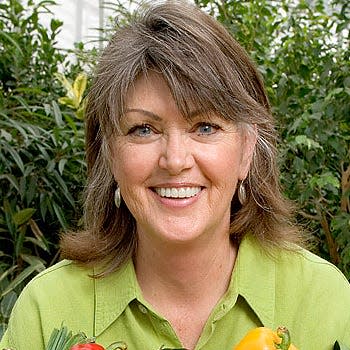Gardening for You: Self-harvesting sunflower seeds
Harvesting your own sunflower seeds is a rewarding end-of-summer activity. Sunflowers are annuals, completing their life cycle in one season. Annuals have four main developmental phases from seed to seed: vegetative, reproductive, ripening, and senescence.

It takes a keen eye to understand sunflowers as they move through their growth phases and know when to harvest the sunflower heads.
The vegetative phase of a sunflower is kicked off at seed germination; the seedling emerges and rapidly progresses to production of true leaves at the young plant stage. A physiological shift from the vegetative to the reproductive stage is signaled when a tiny floral head forms in the terminal bud rather than a new leaf cluster.
The ripening stage begins after inflorescences have expanded and fully opened; the large outer ray petals begin to wilt and the back of the heads turn a pale yellow. Seeds reach full physiological maturity when the senescing inflorescence turns brown and dries.
The sunflower inflorescence is actually hundreds of flowers within a blossom. There are two kinds of tiny florets within each head: ray and disc florets. The outer, showy florets that look like the petals of the sunflower head are ray florets, while the many interior florets are disc florets. Seed is the fruit of the disc florets.

Ripening and senescing developmental phases of a sunflower head fully packed with seed depends upon complete pollination. Honey bees, wild bees and butterflies are attracted to the nectar of ray florets. As pollinators forage, they brush against the male parts holding pollen and transfer the pollen to the female part of disc florets. The pollination event activates fertilization, which stimulates subsequent seed development and maturation.
To harvest seed from a sunflower head:
Observe sunflower progression through the four growth phases.
Wait for heads to reach the senesce stage, indicated by wilting of the showy ray petals and color changes of the back of the head. Tissues on the back of the head change from green to yellow to brown, indicating the degradation of chlorophyll in the head.
Heads droop because of the weight of seed as they fill with milky sap.
Wait until the tiny petals of the interior disc florets have dried and exfoliated, exposing tightly packed plump seeds.
Heads can be covered with cheesecloth to keep birds from pecking the seed or to contain seeds as they begin to desiccate and fall.
Seed coats harden. Depending upon the kind of sunflower, some seed coats are black with white stripes and others totally black.
Sever heads leaving 6 inches of stem. Hang upside down or lie flat on a clean dry surface.
When fully dry rub heads together to dislodge seeds. Collect seed and store in an airtight container.
Enjoy by roasting or keep to enjoy a new generation next planting season.
Ellen Peffley taught horticulture at the college level for 28 years, 25 of those at Texas Tech, during which time she developed two onion varieties. She is now the sole proprietor of From the Garden, a market garden farmette. You can email her at gardens@suddenlink.net
This article originally appeared on Lubbock Avalanche-Journal: Gardening for You: Self-harvesting sunflower seeds

